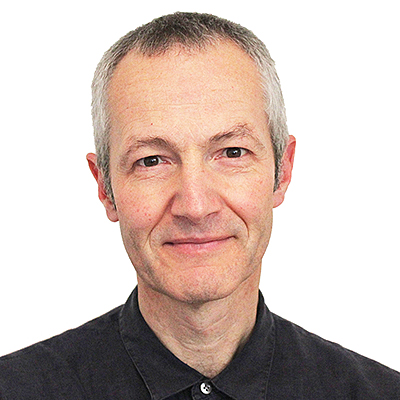“I could watch blood vessels for hours”

Prof. Schulte-Merker, what scientific topic are you working on right now?
We are carrying out research using zebrafish embryos. The great thing about them is that in the first five days of their life they are transparent – and they also develop outside the mother. So we have a wonderful opportunity to look inside them and observe organ development. The lymphatic and blood vessels are already formed after just a few hours; and after 26 hours the heart is beating, after 28 hours the first red blood cells start moving. This means we don’t have to wait long before we can examine the development of the blood and lymphatic systems. And that is actually what we do. We observe single cells as they form complex structures – arteries, veins, lymphatic vessels: the entire vascular system. By taking away individual genes we can understand which process of development these genes are responsible for. This, for example, is how we found the CCB1 gene, which is essential for the formation of lymphatic vessels. Mutations in this gene lead to the so-called Hannekam Syndrome in humans. Patients who have this illness suffer from lymphoedema.
What characterizes you personally as a scientist?
In December 2014 I took on my professorship in Münster. It is a great opportunity, both for myself and for my research group. When I was at the Hubrecht Institute in Utrecht I had a lot of collaborations with researchers in Münster. What I now appreciate is the short distances between us. My wife and I feel very much at home in Münster, whereas our children live in Amsterdam and Tübingen. When I’m not in the laboratory I read or go running. I also play chess. And if I have time I try to go diving once a year.
What is your great aim as a scientist?
The overriding aim is to understand how vessels are formed. On a day-to-day basis this breaks down into lots of smaller aims, since in our research projects new questions arise almost on a daily basis. I want to find answers to them on the highest scientific level possible, and thereby advance basic and medical research step by step.
What’s your favourite “toy” for research – and what can it do?
I don’t look at laboratory equipment as toys – it is too expensive for that. But I still get enormous pleasure out of our work. For example, I could carry out imaging for hours on end – in other words, observe fish embryo, their vessels and their genetic peculiarities under the microscope. Even after 20 years I haven't had enough of it. The technology for doing this is getting better all the time. For example, we can simultaneously label the lymphatic system, the blood system and other cell types in different colours and observe their development. Just a few years ago that would have been inconceivable.
Can you remember your happiest moment as a scientist?
I can’t tell you what my happiest moment was. You don’t live for the two highlights you have in a year. Often it’s the little things that advance our research and lead us to the next question. At best, these small moments of happiness, all together, lead to a significant scientific publication or an acclaimed paper. But it’s the small steps and the constant progress that make me happy.
Which scientific phenomenon still regularly fascinates you today?
Even after 20 years of research on zebrafish I still ask myself what actually drives cells. It’s a question that throws up puzzles for us again and again. Recently, for example, in a genetically manipulated zebrafish we observed cells which at one point behaved in a complete different way than normally. At this point the cells were evidently lacking the information on how they should behave. We don’t yet know why that happens.
How much artistry, creativity and craftsmanship is there in your scientific work?
You need a bit of each. It’s like cooking: 70 percent is skills that you can learn. But you also need the right ingredients and the necessary creativity to conjure up a wonderful meal out of the ingredients. In our research we wouldn’t be able to do our work without confocal microscopy or all our aquariums. Those are the ingredients. But we also need the right feeling for which scientific questions to pursue and how to reach our aims as efficiently as possible.

